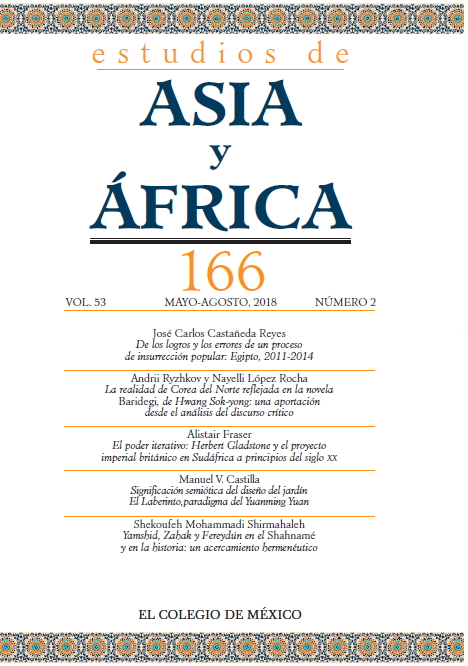Resumen
El Shahnamé de Ferdousí comparte fuentes, influencias y objetivos con otros libros de historia contemporáneos; sin embargo, hay diferencias significativas entre ellos, especialmente debido a las distintas perspectivas y estrategias semióticas que utiliza cada autor para cumplir con la única finalidad de revivir la identidad cultural persa en el ambiente hostil del siglo X e.c. Una minuciosa comparación hermenéutica del Shahnamé con la obra de uno de los más importantes historiadores iraníes de ese siglo, Tha’alibí, destaca el significado de dichas diferencias, subraya las contribuciones de Ferdousí a la historia de Irán y explica la vigencia y el poder de su trabajo.
Referencias
Ashraf, A. (2008). Howiat-e irani be se rawayat [Tres perspectivas de la identidad iraní]. Irannameh, (24), 1-21.
Beizaí, B. (2012). Hezar Afsan Koyast? [¿Dónde está “Las mil fábulas”?]. Teherán: Roshangaran.
Dada guí, F. (2012). Bondahesh (Ed. y trad. M. Bahar). Teherán: Tus.
Darmesteter, J. (1877). Ormazd et Ahriman. Leurs origines et leur histoire. París: F. Vieweg Libraire-Éditeur.
Dowlatshahi, Y. (2015). Visiones del cuerpo en la antigua Persia. Manuscrito inédito.
El Avesta (2013). (Ed. Y. Dustjah). Teherán: Morvarid.
Ferdousí, A. Q. (2014). Shahnamé (Ed. B. E. Edvardovich). Teherán: Qoqnus.
Gardizi, ’Abd al-Hayy. (1968). Zayn al-ajbar (Ed. ’Abd-al-Hayy Habibi). Teherán: Bonyad-e Farhang-e Iran.
Meskub, S. (1992). Chand goftar dar farhang-e Iran. Teherán: Zenderud.
Meskub, S. (2006). Howiat-e irani va zabane farsi. Teherán: Nashr va Pajuhesh Foruzanruz.
Mohammad i Shirmahaleh, S. (2016). Sintiendo la palabra: contextos lingüísticos y literarios del icono metafórico. México: unam.
Nöldeke, T. (2006). Das iranische nationalepos: Besonderer Abdruck aus dem Grundriss der iranischen philologie (Trad. B. Alavi). Teherán: Negah.
Oldham, C. F. (1905). The sun and the serpent: A contribution to the history of serpent-worship. Londres: Archibald Constable & Co Ltd.
Sarkaratí, B. (1979). Bonyane asatirie hemaseye mellie iran [El fundamento mítico de la épica nacional de Irán]. Revista de la Facultad de Literatura y Humanidades de la Universidad de Tabriz, (125), 1-61.
Tabarí, Mohammad ibn Yarir. (1990). Tarij-e Tabarí [Historia de Tabarí] (Vol. 1) (Trad. A. Qasem Payandé). Teherán: Asatir.
Tha’alibí Neishababurí, A. (1970). Tarij-e Tha’alibi: Qorar Ajbar Muluk Fors va Siarihim (Trad. M. Fazaeli). Teherán: Noqre.
The Zend Avesta (2a ed.) (2 vols.). (1895). (Trad. J. Darmesteter). Oxford: Clarendon Press.
Esta obra está bajo una licencia internacional Creative Commons Atribución-NoComercial-SinDerivadas 4.0.
Derechos de autor 2022 Estudios de Asia y África


